Life Insurance Coverage Considerations

Do I need life insurance?
You need life insurance if anyone depends on your income. In such cases, life insurance solves many personal and business financial problems.
Personal needs
If you are a young parent, you may need life insurance on your own life to enable a surviving spouse to raise the children. When you are older, you may need life insurance if you are financially responsible for an aging parent or want to provide funds to take care of final expenses, debts or taxes.
A general rule suggests buying protection equivalent to FIVE TO EIGHT TIMES YOUR ANNUAL INCOME. Your needs may vary according to your financial assets and liabilities.
Life insurance can solve your heirs’ immediate and long-term needs.
- Immediate needs include: funeral expenses, unpaid medical bills, debt and taxes. Having money to pay immediate expenses may give your heirs time to readjust their lives, free from money pressures.
- Long-term need for the care of dependents, college expenses and, in general, providing financial resources.
Business needs
Life insurance is often the solution to:
• Replace a key person and provide the funds to cover the costs of locating and training a replacement.
• Continuation of the business when a proprietor, partner or co-owner dies.
ALL RIGHTS RESERVED – Insurance Information Institute, Inc.
There are two basic types of life Insurance – Term and Permanent
Term Insurance
It provides protection for a specified period of time, typically from one to 30 years. It pays a death benefit only if you die during this term. Some policies can be automatically renewed at the end of the coverage period, and some can be converted to permanent insurance without need for a medical exam.
There are several different types of term insurance you can consider:
1. Renewable Term Insurance.
These policies have a provision allowing you to renew coverage at the end of the term without having to show evidence of insurability. The company has to renew your policy even if your medical condition has deteriorated. However, the premium rate will rise with each renewal.
2. Convertible Term Insurance.
These policies allow you to convert your term coverage into a permanent policy without providing evidence of insurability. Premiums for convertible policies are usually higher than for nonconvertible policies. Once converted, the premiums for the permanent coverage will be higher than those of the term policy with the same death benefit. However, the permanent policy premiums will remain the same while the term premiums will rise.
3. Level Term Insurance.
These policies provide a fixed premium for a certain number of years, usually 10 or 20 years, while the death benefit remains unchanged. The death benefit is the amount the life insurance company will pay, as stated in the policy, when the insured person dies. The advantage is that you lock in a certain rate for the period of the policy. The disadvantage is that the premiums will tend to cost more than the earlier years of the renewable policy, and when the level policy expires, premium rates will jump considerably if you want to renew with another level policy.
4. Decreasing Term Insurance.
The death benefit in this type of policy decreases over its term. For example, you might start with $100,000 of coverage and the amount of coverage decreases by $10,000 each year for 10 years. The premium usually remains the same over the term of the policy. This type of insurance allows you to pay the same premium for less insurance over time, rather than have your premium increase for the same amount of insurance.
5. Increasing Term Insurance.
This kind of policy starts at one level of death benefit which gradually increases over the life of the policy. You may start with a $100,000 policy and increase the death benefit $10,000 each year for 10 years. The premium will increase each year. This kind of policy may be appropriate if you see your insurance needs growing in coming years because, for example, you expect to have more children.
Permanent (cash value) Insurance
It provides life-long protection as long as you continue to pay premiums. The premiums are based on your age at the time of purchase, and generally remain level. They do not increase as you age. Therefore, the younger you are when you buy the policy, the lower the premium you will pay for the life of the policy.
Because premiums remain level, permanent insurance is more expensive than term insurance. But permanent insurance accumulates cash value, which may be refundable upon surrender of the policy. While the policy is in force, cash values can be borrowed against or used to pay premiums.
The proceeds of many permanent life insurance policies can be used to ease the financial burden of catastrophic illness, terminal illness or long-term care. These accelerated benefits may be offered as part of the basic policy or as a rider to an existing policy.
With a permanent life insurance policy, you may borrow up to the cash value at an interest rate (fixed or adjustable) stated in the policy. Any unpaid interest is added to the loan. Any unpaid loan, including interest, will be deducted from the death benefit. The cash value can be used to pay premiums for a period of time, keeping the stated death benefit, or it can be used to purchase paid-up insurance in a lesser amount with no further premiums due.
There are four basic types of permanent insurance
1. Whole Life
Sometimes also called life or ordinary life, this policy has a fixed guaranteed rate and develops guaranteed cash values.
There are two variations on traditional whole life:
Joint Whole Life
The policy insures two lives instead of one. Also called first-to-die coverage, the policy pays the death benefit to the surviving insured person when the first one dies. This is often purchased by a husband and wife.
Survivorship Life
The policy insures two people and pays a death benefit only when the second person has died. It is designed for married couples who want to provide funds to pay estate taxes that may be due after their deaths. Also called second-to-die coverage.
2. Universal Life
This policy has more flexibility. Within certain limits, you can change the death benefit, the amount of premium and payment frequency. Unlike whole life, this is an “interest driven” policy, which normally pays a minimum guaranteed interest of 4% to 4.5%. If the interest rates are continuously low, additional premiums may have to be paid to avoid a lapse of coverage.
3. Variable Life
This policy has death benefits and cash values that vary with the performance of an underlying portfolio of investments that you select. The death benefit and cash value are not guaranteed. They can go down as well as up, although there may be a guaranteed minimum death benefit.
4. Variable Universal
This policy combines the premium and death benefit flexibility of universal life with the investment flexibility and risk of variable life.
On all of the above policies, riders are available at an additional cost for the following coverages:
1. Disability waiver of premium
A feature added to some life insurance policies providing for the waiver of premium, and sometimes payment of monthly income if the policyholder becomes totally and permanently disabled.
2. Accidental death
A provision in a life insurance policy for payment of an additional benefit if death is caused by an accident. This is sometimes called double indemnity.
Key life insurance terms
It is important to understand some of the key terms in life insurance policies, before you purchase one:1. Accelerated death benefit.
Some insurers offer you the ability to collect life insurance benefits while you are still alive to cover the costs of catastrophic illness. Accelerated death benefits, also known as living benefits policies, are generally offered as part of the policy or as a rider to an existing insurance contract. They will pay you either a percentage or all of your death benefit under certain specific circumstances, including terminal illness where you have a life expectancy of less than 12 months, contraction of a disease or need for long-term care.
1. Cash value
The savings portion of your premium in a permanent insurance policy. The cash value is invested in stocks, bonds, real estate and other investments by the insurance company and your returns grow tax-deferred. If you surrender the policy by stopping premium payments, you will be paid whatever remaining cash value is in the policy.
2. Endowment
An endowment plan provides a particular death benefit whether or not the insured person survives to the end of a specified term. If the person dies before the maturity date, the policyís death benefit is paid to the beneficiary. If the insured person is still alive on that date, the benefit is paid to the policyholder. Changes in tax law means that most of these plans no longer qualify for advantageous tax benefits because these plans are not considered to be life insurance for tax purposes.
3. Medical Information Bureau (MIB).
A clearinghouse used by the life insurance industry to screen insurance applicantsí medical histories. This ensures that applicants do not withhold medical information from one company that they have given to another when applying for life insurance. The medical history is only given to an insurance company if you have applied for insurance with that company. No company is permitted to base its decision on approving or rejecting an application solely on the MIB report, but it can be a key determinant of the insurance companyís decision. You have the right to know what is listed on your MIB report. You can contact the MIB and get a copy of your report for a small fee at P.O. Box 105, Essex Station, Boston, Massachusetts 02112, 617-426-3660, or at http://www.mib.com
4. Policy loan.
Loans against the accumulated cash value in a policy. The interest rate on the loan may be fixed or adjustable. You can repay the policy loan at any time without penalty. If you donít pay the interest due, it is added to the loan amount. If the unpaid interest and loan amount exceed the cash value in the policy, the policy will be terminated without any cash value payout. If you die with an outstanding policy loan, the amount of the loan plus interest will be deducted from the death benefit
ALL RIGHTS RESERVED – Insurance Information Institute, Inc.
What are the advantages/disadvantages of term and permanent insurance?
There are pros and cons to buying both term or permanent (cash value) insurance. Each has advantages and disadvantages. One or the other or both may be appropriate to meet your insurance needs.
Term Insurance
The advantages of term policies include:
1. Term premiums are lower than those for permanent insurance so you get more insurance coverage for less money. This allows you to buy more coverage when you need it the most, such as when you have young children.
2. Because term provides insurance for a specific period of time, it is ideal for covering specific financial needs such as covering your life until your children are through college, until they are self-supporting, or covering your life until you pay off your mortgage.
The disadvantages of term policies include:
1. Premiums increase every time a policy is renewed, so the cost of term insurance can become prohibitive as you near your late 50s and 60s.
2. Term life doesn’t provide a savings feature known as cash value. Term policies only pay benefits if you die while the policy is in force.
3. If your insurance company wants you to take a medical exam when you want to renew your policy, you may be turned down if your health condition has deteriorated.
4. You could outlive your coverage, because term insurance is generally not renewable after age 70 or 75, depending on your stateís insurance regulations.

Permanent (Cash Value) Insurance
The advantages of permanent insurance are:
1. You lock in a premium rate at whatever age you start the policy and the benefits are guaranteed for as long as you live.
2. Your policy accumulates cash value that grows tax-deferred. Your premiums are invested by the insurance company in stocks, bonds, real estate, venture capital and other funds, and you receive a return on your money in the form of annual dividends, which increase your cash value.
3. You can tap that cash value while you are alive with low-cost loans. Any outstanding loans will reduce your policyís cash value by the amount of the loan. Or you can withdraw the cash value, though you will have to pay income taxes on those withdrawals. You can also convert your cash value into an annuity that will provide fixed-income throughout your retirement years.
4. If you surrender your policy by discontinuing to pay premiums, you will receive any accumulated cash value.
5. Dividends can be used to pay your premium in whole or in part.
6. Once you have passed the medical tests and have been issued a policy, your policy cannot be cancelled for medical or any other reasons if you continue to pay the premium.
The disadvantages of permanent insurance are:
1. It is far more expensive than term insurance. This means that you can usually afford far less permanent coverage than you can afford term. If you start a permanent policy and then must drop it because you cannot afford the premiums, you will have lost a great deal of money.
2. Insurance companies invest your cash value quite conservatively so it is possible that you could earn higher returns on your own if you are a skillful and knowledgable investor.
3. The return you earn on your cash value is determined by current interest rates in money markets. So if interest rates are high, your cash value will grow much more quickly than if interest rates are low. Periodically, the insurance company deducts its expenses and a mortality charge from your cash balance. The mortality charge is the amount of money, based on a premium rate per thousands of dollars of death benefits, required to provide you with life insurance. The company will guarantee a minimum interest rate and a maximum mortality charge. Some will also guarantee a maximum expense charge.
ALL RIGHTS RESERVED – Insurance Information Institute, Inc.
